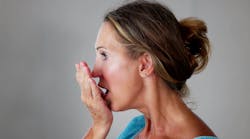Strategies to help the teenage patient achieve greater success with oral hygiene
ADDITIONAL READING |Importance of the hygienist for the orthodontic patient
Treat your adolescent patients as adults. Teenagers are in the process of asserting their independence from their parents and can take responsibility for their own oral health. Inform teens that choices regarding the care of their teeth and gums today have the potential to produce lifelong effects, but avoid lecturing and scolding.
ADDITIONAL READING |Dismay with kid decay: treatment options for broken down permanent teeth in the mixed dentition
Maintain a positive attitude with teenage patients. Offer positive suggestions instead of an exhaustive list of things not to do. For example, a patient who drinks sodas or sports drinks could be encouraged to brush or swish with water after drinking sugary liquids. This same patient could be encouraged to have such a beverage with a meal rather than sip on it throughout the day. Keep your suggestions positive instead of telling the patient that sugary drinks are bad for his or her teeth.
Be on the lookout for clinical manifestations that could indicate a larger underlying issue.Gingival recession in the mandibular anterior facial region may indicate smokeless tobacco use. Erosion on the palatal surface of the maxillary teeth could be an indicator that the patient is struggling with bulimia. Oral piercings might be causing infection or bone loss. In such cases, visual aids may be helpful in emphasizing these effects to the patient. A quick Google image search of “infection from lip piercing” or “gum recession from tobacco” can put numerous shocking pictures at your fingertips that you can, in turn, show your patients. Hopefully this will be helpful in motivating them to discontinue their negative behaviors.
Use preventive aids to their fullest capacity. In-office fluoride varnish, prescription fluoride toothpaste, proxy brushes, floss picks, and threader floss for orthodontic patients are useful adjuncts to the patient’s routine prophylaxis.
While every patient is different, it is important to keep a positive attitude and encourage the adolescent patient to make wise choices in regard to oral health. Hygienists should thoroughly examine the teenage patient’s oral cavity and include the use of proper preventive aids in the treatment plan and oral hygiene instruction.




